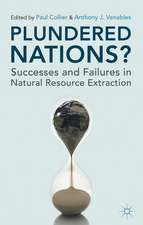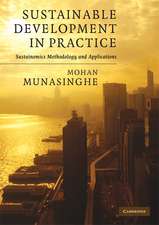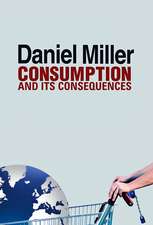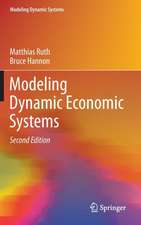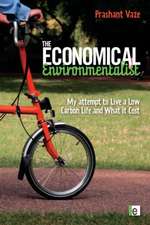The Economics of Ecosystems and Biodiversity: Ecological and Economic Foundations: TEEB - The Economics of Ecosystems and Biodiversity
Editat de Pushpam Kumaren Limba Engleză Paperback – 26 mar 2012
| Toate formatele și edițiile | Preț | Express |
|---|---|---|
| Paperback (1) | 459.09 lei 6-8 săpt. | |
| Taylor & Francis – 26 mar 2012 | 459.09 lei 6-8 săpt. | |
| Hardback (1) | 762.36 lei 6-8 săpt. | |
| Taylor & Francis – 6 oct 2010 | 762.36 lei 6-8 săpt. |
Preț: 459.09 lei
Preț vechi: 540.11 lei
-15% Nou
Puncte Express: 689
Preț estimativ în valută:
87.86€ • 91.20$ • 73.26£
87.86€ • 91.20$ • 73.26£
Carte tipărită la comandă
Livrare economică 22 martie-05 aprilie
Preluare comenzi: 021 569.72.76
Specificații
ISBN-13: 9780415501088
ISBN-10: 0415501083
Pagini: 456
Ilustrații: black & white tables, figures
Dimensiuni: 189 x 246 x 23 mm
Greutate: 0.4 kg
Ediția:1
Editura: Taylor & Francis
Colecția Routledge
Seria TEEB - The Economics of Ecosystems and Biodiversity
Locul publicării:Oxford, United Kingdom
ISBN-10: 0415501083
Pagini: 456
Ilustrații: black & white tables, figures
Dimensiuni: 189 x 246 x 23 mm
Greutate: 0.4 kg
Ediția:1
Editura: Taylor & Francis
Colecția Routledge
Seria TEEB - The Economics of Ecosystems and Biodiversity
Locul publicării:Oxford, United Kingdom
Public țintă
Postgraduate and ProfessionalCuprins
1. Integrating the Ecological and Economic Dimensions in Biodiversity and Ecosystem Service Valuation 2. Biodiversity, Ecosystems and Ecosystem Services 3. Measuring Biophysical Quantities and the Use of Indicators 4. The Socio-cultural Context of Ecosystem and Biodiversity Valuation 5. The Economics of Valuing Ecosystem Services and Biodiversity 6. Discounting, Ethics, and Options for Maintaining Biodiversity and Ecosystem Integrity 7. Lessons Learned and Linkages with National Policies Appendix 1: How the TEEB Framework Can be Applied: The Amazon Case Appendix 2: Matrix Tables for Wetland and Forest Ecosystems Appendix 3: Estimates of Monetary Values of Ecosystem Services
Notă biografică
This volume is an output of TEEB: The Economics of Ecosystems and Biodiversity study and has been edited by Pushpam Kumar, Reader in Environmental Economics, University of Liverpool, UK. TEEB is hosted by the United Nations Environment Programme (UNEP) and supported by the European Commission, the German Federal Ministry for the Environment (BMU) and the UK Department for Environment, Food and Rural Affairs (DEFRA), recently joined by Norway's Ministry for Foreign Affairs, The Netherlands' Ministry of Housing (VROM), the UK Department for International Development (DFID) and also the Swedish International Development Cooperation Agency (SIDA). The study leader is Pavan Sukhdev, who is also Special Adviser - Green Economy Initiative, UNEP.
Recenzii
'A landmark study on one of the most pressing problems facing society, balancing economic growth and ecological protection to achieve a sustainable future.' – Simon Levin, Moffett Professor of Biology, Department of Ecology and Evolution Behaviour, Princeton University, USA
'TEEB brings a rigorous economic focus to bear on the problems of ecosystem degradation and biodiversity loss, and on their impacts on human welfare. TEEB is a very timely and useful study not only of the economic and social dimensions of the problem, but also of a set of practical solutions which deserve the attention of policy-makers around the world.' – Nicholas Stern, I.G. Patel Professor of Economics and Government at the London School of Economics and Chairman of the Grantham Research Institute on Climate Change and the Environment
'The [TEEB] project should show us all how expensive the global destruction of the natural world has become and - it is hoped - persuade us to slow down.' – The Guardian
'Biodiversity is the living fabric of this planet - the quantum and the variability of all its ecosystems, species, and genes. And yet, modern economies remain largely blind to the huge value of the abundance and diversity of this web of life, and the crucial and valuable roles it plays in human health, nutrition, habitation and indeed in the health and functioning of our economies. Humanity has instead fabricated the illusion that somehow we can get by without biodiversity, or that it is somehow peripheral to our contemporary world. The truth is we need it more than ever on a planet of six billion heading to over nine billion people by 2050. This volume of 'TEEB' explores the challenges involved in addressing the economic invisibility of biodiversity, and organises the science and economics in a way decision makers would find it hard to ignore.' – Achim Steiner, Executive Director, United Nations Environment Programme
'The volume will be very helpful not only to researchers working in the area of economics of ecosystems and biodiversity, but also to policy makers who will benefit from the concrete applied examples of valuations which could support policy design.' – Anastasios Xepapadeas, Editor, Environmental and Development Economics, Cambridge University Press.
'This is a thoroughly readable, enjoyable, and instructive book. I am neither an ecologist nor an economist, and I recommend it to those who are, and to those who are not.' – Craig Pearson, Australasian Journal of Environmental Management
'TEEB brings a rigorous economic focus to bear on the problems of ecosystem degradation and biodiversity loss, and on their impacts on human welfare. TEEB is a very timely and useful study not only of the economic and social dimensions of the problem, but also of a set of practical solutions which deserve the attention of policy-makers around the world.' – Nicholas Stern, I.G. Patel Professor of Economics and Government at the London School of Economics and Chairman of the Grantham Research Institute on Climate Change and the Environment
'The [TEEB] project should show us all how expensive the global destruction of the natural world has become and - it is hoped - persuade us to slow down.' – The Guardian
'Biodiversity is the living fabric of this planet - the quantum and the variability of all its ecosystems, species, and genes. And yet, modern economies remain largely blind to the huge value of the abundance and diversity of this web of life, and the crucial and valuable roles it plays in human health, nutrition, habitation and indeed in the health and functioning of our economies. Humanity has instead fabricated the illusion that somehow we can get by without biodiversity, or that it is somehow peripheral to our contemporary world. The truth is we need it more than ever on a planet of six billion heading to over nine billion people by 2050. This volume of 'TEEB' explores the challenges involved in addressing the economic invisibility of biodiversity, and organises the science and economics in a way decision makers would find it hard to ignore.' – Achim Steiner, Executive Director, United Nations Environment Programme
'The volume will be very helpful not only to researchers working in the area of economics of ecosystems and biodiversity, but also to policy makers who will benefit from the concrete applied examples of valuations which could support policy design.' – Anastasios Xepapadeas, Editor, Environmental and Development Economics, Cambridge University Press.
'This is a thoroughly readable, enjoyable, and instructive book. I am neither an ecologist nor an economist, and I recommend it to those who are, and to those who are not.' – Craig Pearson, Australasian Journal of Environmental Management
Descriere
This book is the first volume in a series of crucial outputs from The Economics of Ecosystems and Biodiversity (TEEB) project. It provides a comprehensive global assessment of economic aspects of the critical ecosystem services upon which human well-being relies, but which are often undetected and unaddressed in the conventional economic system.






